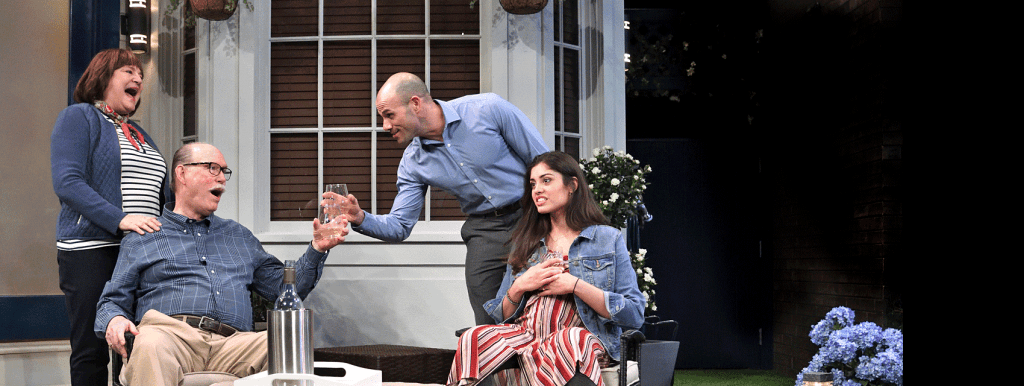10/29/18
Education Intern Stephanie Risch had the chance to sit down and speak with the director of Pride and Prejudice, Birgitta Victorson about her process and approach to bring this hilarious adaptation to our stage and further the humor within.
Stephanie Risch: First off, how excited are you to back at Trinity Rep?
Birgitta Victorson: So excited to be back here, having gone to school here and previously worked with the company, and I also know other teachers who have come back to teach at the MFA program. I feel like I have a real community of artists, mentors, and friends here.
SR: Why this particular adaptation for this stage?
BV: I think one reason that Kate Hamill’s adaptation is so exciting right now is that she embraces collaborative storytelling. I feel that if we’re going to dive into old pieces of literature, we have to really be looking at them freshly and in a different way. Kate Hamill’s writing demonstrates her love for the theater and her willingness to use a vast array of theatrical elements to bring the story to life in surprising ways on stage. She also allows us to investigate the behavior of the characters and how they wrestle with their problems through comedy – which is really needed right now.
SR: So off of that, do you think that Kate Hamill’s suggestions of character doublings and casting as different genders have something to do with how the problems are addressed?
BV: Yeah! Absolutely, because Jane Austen was investigating gender structures, stereotypes and expectations in early 19th century England and I think we have not strayed that far two-hundred years later from her observations. I think that when looking at an actor playing a character with a different gender assignment, it highlights our expectations for that gender in an interesting way and allows us to ask the question of who made these rules? How does that rule apply to a masculine presence versus a feminine presence? It doesn’t take away from the story in any way, it supports the fact that there were expectations for gender at that time, very specific expectations having to do with money, marriage and securing one’s future. And many of these rules still exist – we’re fighting them louder and pushing against them in 2018 but seeing an actor playing against identity is just an opportunity to examine the constructs that we put on gender – and in some moments, laugh at the absurdity of the rules.
SR: Because this is a primarily female cast, what do the actors’ portrayals look like when approaching gender in this production?
BV: The gender assignments that Austen has designated for her characters in the book still exist within the production. It is up to the audience to decide how they see these rules apply to each character based on what clothing the actor puts on his/her/their body.
SR: Switching gears a little bit, you have a lot of choreography within your background, how does that come into play in this production?
BV: Kate Hamill has written into the play two balls the characters go to and dance at. There are also a series of games that are played between different characters. I understand stories better if I'm seeing them physically in space. And because Kate Hamill has inserted this movement into the text, it was just a great opportunity for me to use the skills I have as a choreographer and as a physical theater artist and literally make games and dance part of the staging. There are moments when we’re telling the story and we’re fully immersed in Regency-era England and there are other moments where the emotional journeys of the characters burst through in a dance that uses movement and music from the 80s, 90s and today. These moments in no way take away from Austen's storytelling but are there to enhance the emotional journey of the characters.
SR: Speaking of explosions, the opening of the play is a very unique moment, what tone does it set for the entirety of the play?
BV: This adaptation is a new work of an old story, and this unique company of actors, six women and two men, have been charged with retelling the whole story within their eight bodies. The opening is meant to take us, along with these players, into that imaginative journey of possibilities. We’re entering this space together and we’re going to play a game and it’s called “Pride and Prejudice”. It’s a big imaginative game and the whole room is in on it! We want the audience to dive into the excitement and possibility of exploring this text with us.
SR: What about this production is going to speak to a modern and young audience?
BV: The examination of the structures and systems that one is born into and how that machinery gives one rules and tells one how one should move through life. Some of that is gender-related, but it can deal with all kinds of different things. Lizzy is a woman who said, “No I won’t do it, I’m going to find my own thing – my own way.” I think Lizzy is a character we keep coming back to because her story and truth are about not letting the system she was born into control her. I don’t know anyone who doesn’t identify with that desire on some level.

